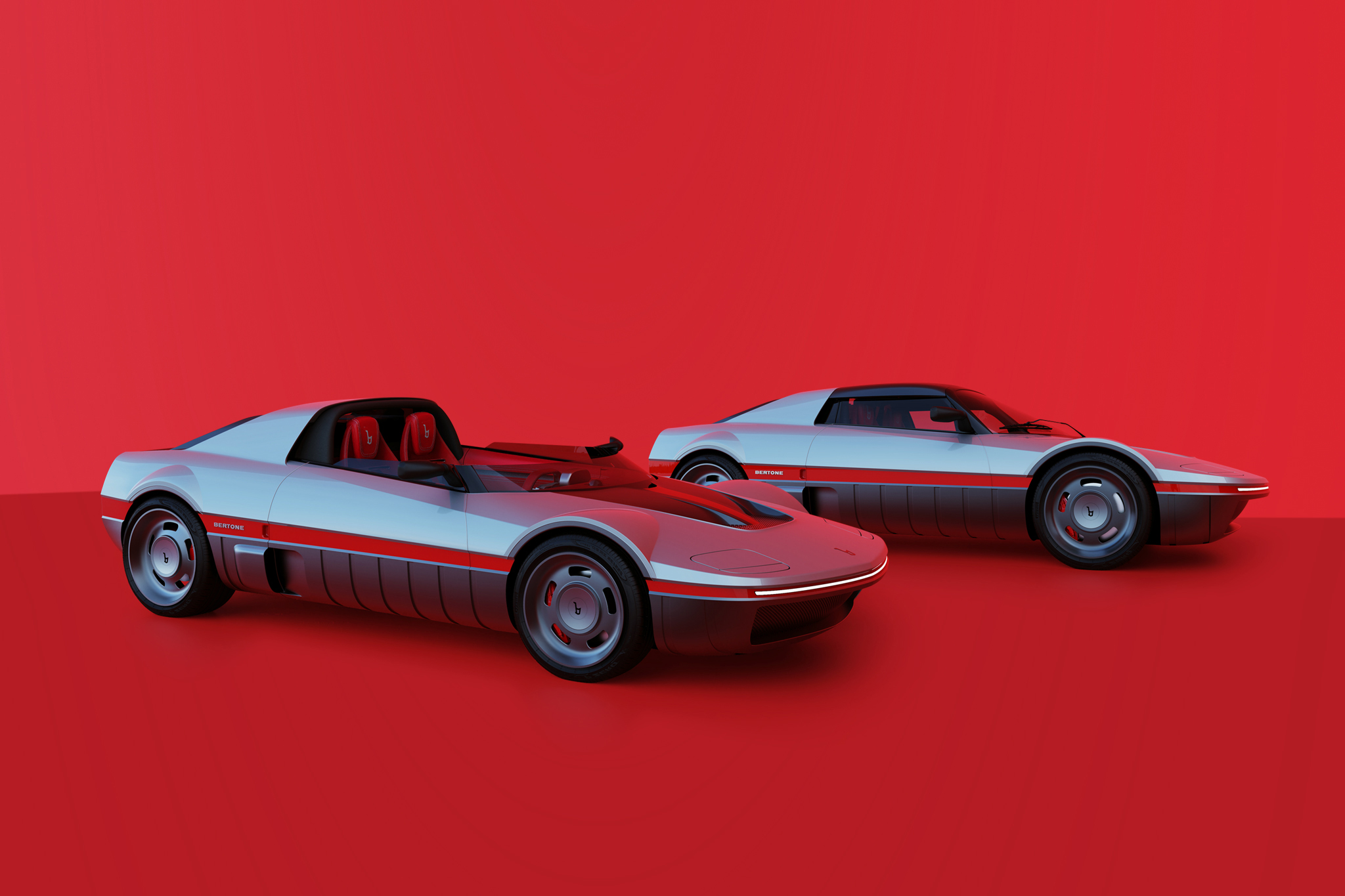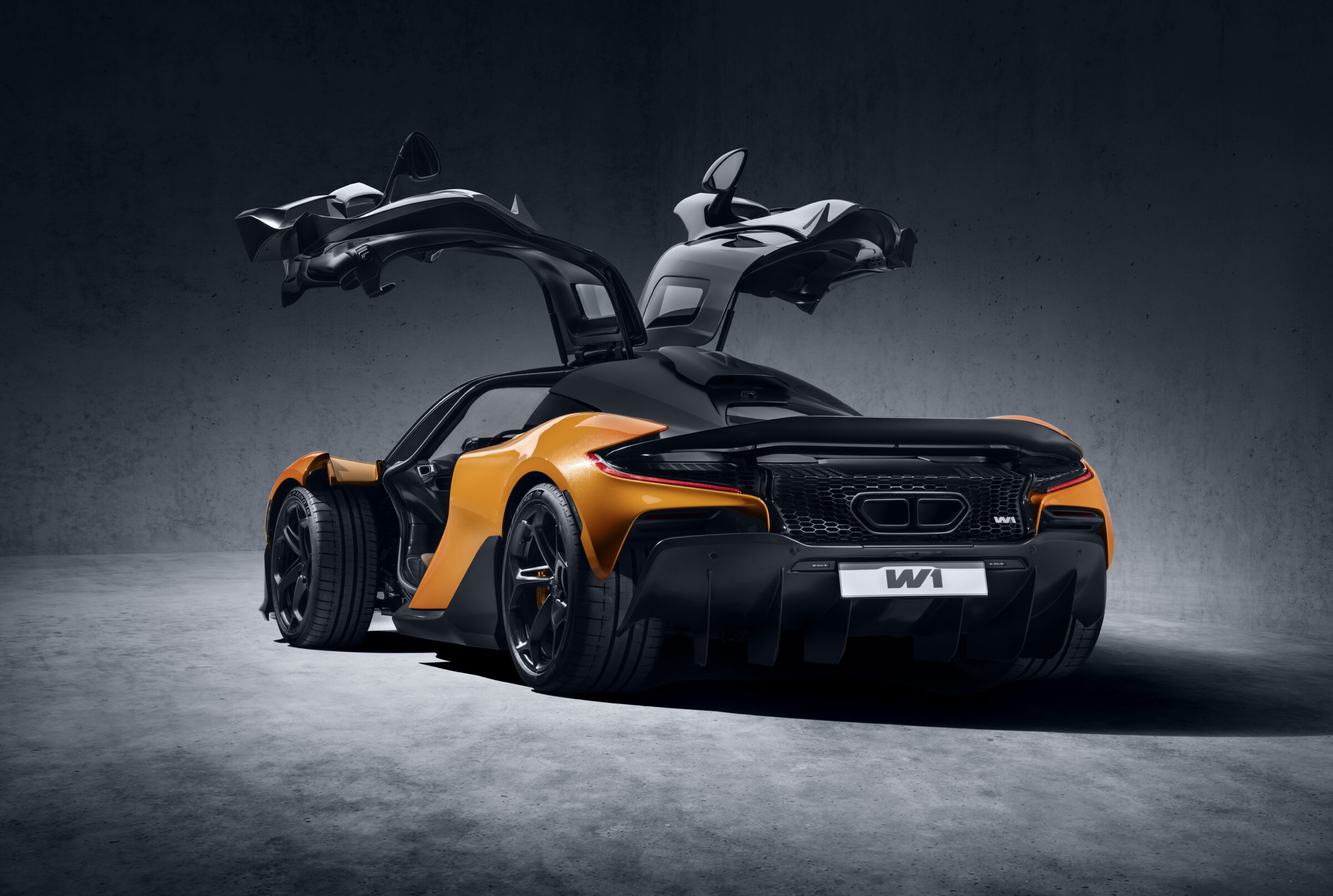40 Years of Renault 5 Turbo
Today’s car world would be unthinkable without turbochargers. The fact that only 50 years ago these components played no role at all in passenger cars and were subsequently used exclusively to increase power in sports cars seems to have been almost forgotten. Only Saab in Sweden installed turbos also to improve efficiency, while Porsche first dominated the Can-Am race series at will and then brought the new top model 911 Turbo to the dealers. At the 1980 Geneva Motor Show, Renault also presented its first vehicle with a turbo engine. Surprisingly this was not simply left with a new engine in a comparatively familiar body shell. Together with Alpine in Dieppe, a new mid-engine platform was developed from 1977 onwards, which was then covered with a bodywork whose rough shape and lights were to be reminiscent of the Renault 5. However, broadly flared fenders made a much more sporty impression.
In front of the rear axle, the Renault engineers installed a four-cylinder engine with grey cast iron block and aluminium cylinder heads. It delivered 118 kW/160 hp and 210 newtonmeters of torque from 1.4 liters of displacement. This performance was achieved with one Garrett turbocharger, which provided 0.85 bar boost pressure. This allowed the car to accelerate to 62 mph in 6.9 seconds and then up to 127 mph topspeed. The aerodynamics didn’t allow for any more. A K-Jetronic injection system from Bosch provided the mixture preparation and the five-speed gearbox from the Renault 30 TX transferred the power to the rear axle. Double wishbone suspensions all round, with torsion spring at the front and coil springs at the rear, came with minor modifications from the normal Renault 5 Alpine and ensured that the Michelin TRX tires, which were 195 millimeters wide at the front and 220 millimeters wide at the rear, held to the road. In the interior, the engine left only room for two seats. Where otherwise the back seats and the boot of a Renault 5 would be located, there is a high rising fairing. Bertone contributed a specially designed instrument panel with ten round instruments and special sports seats. In keeping with the character of the time, these were often given a striking contrasting color to the bodywork, which was available exclusively in red or blue. The spare wheel is located under the front hood.


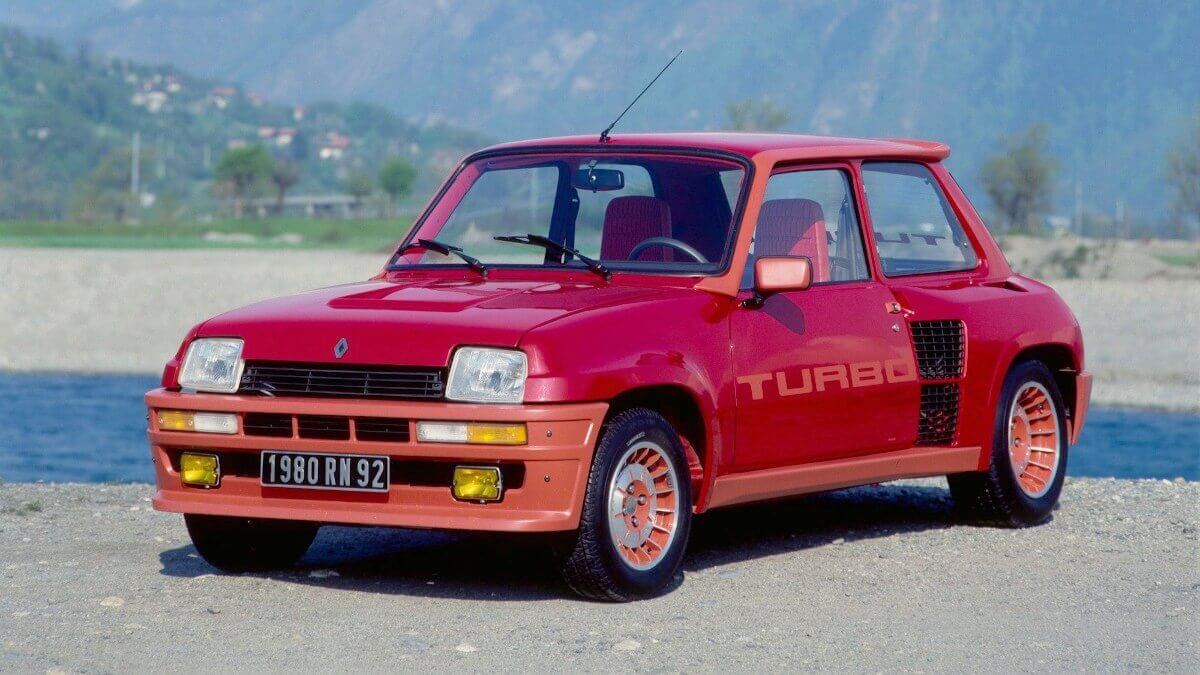





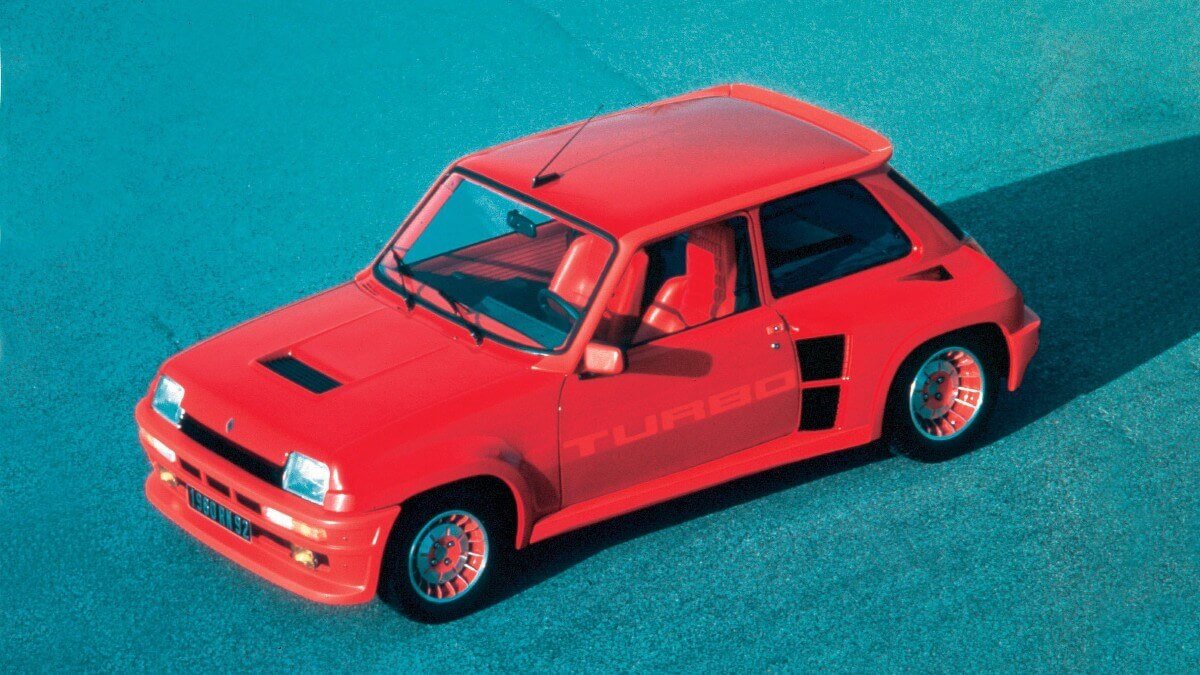



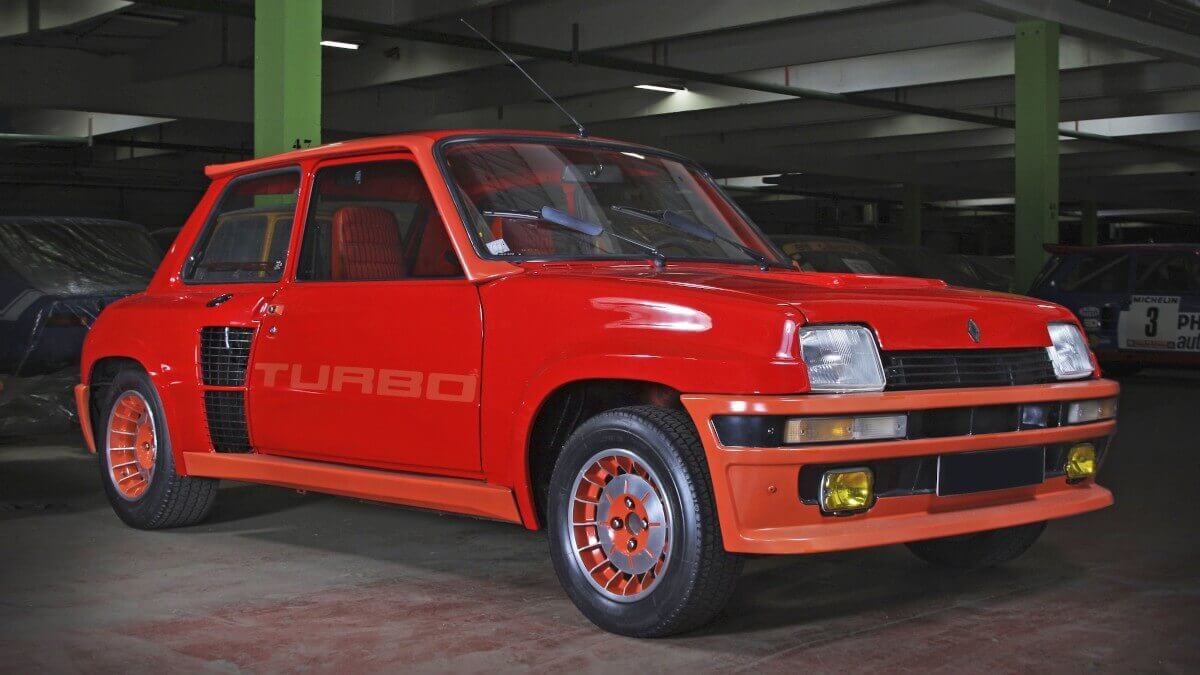

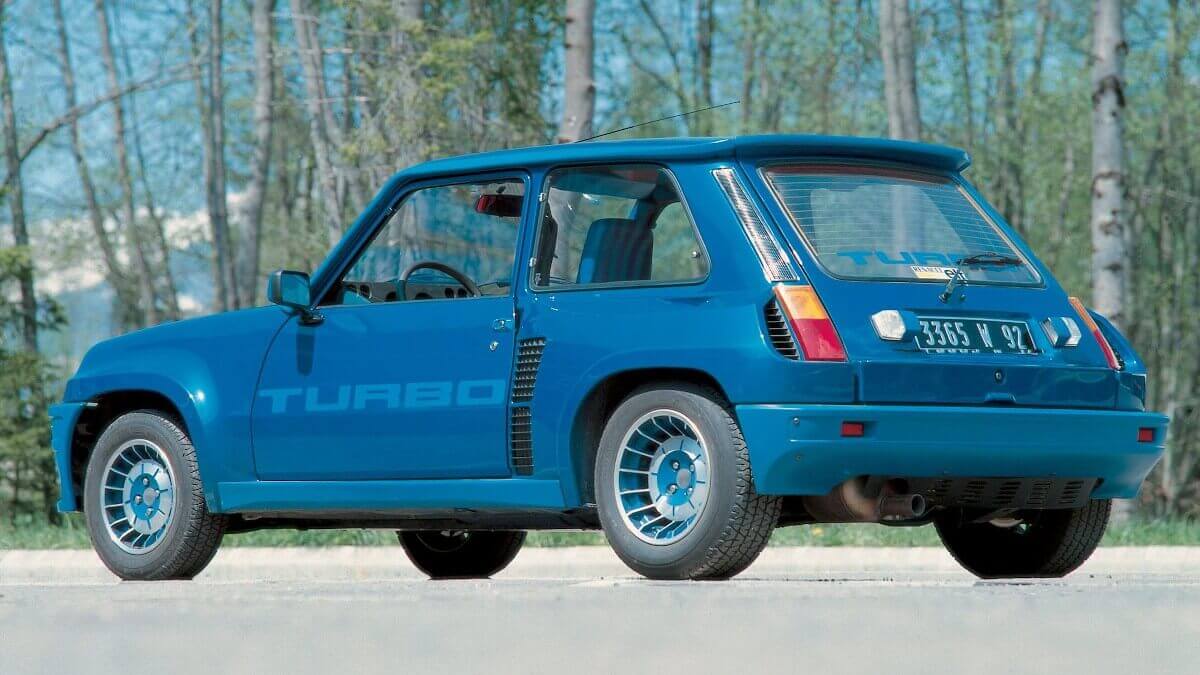

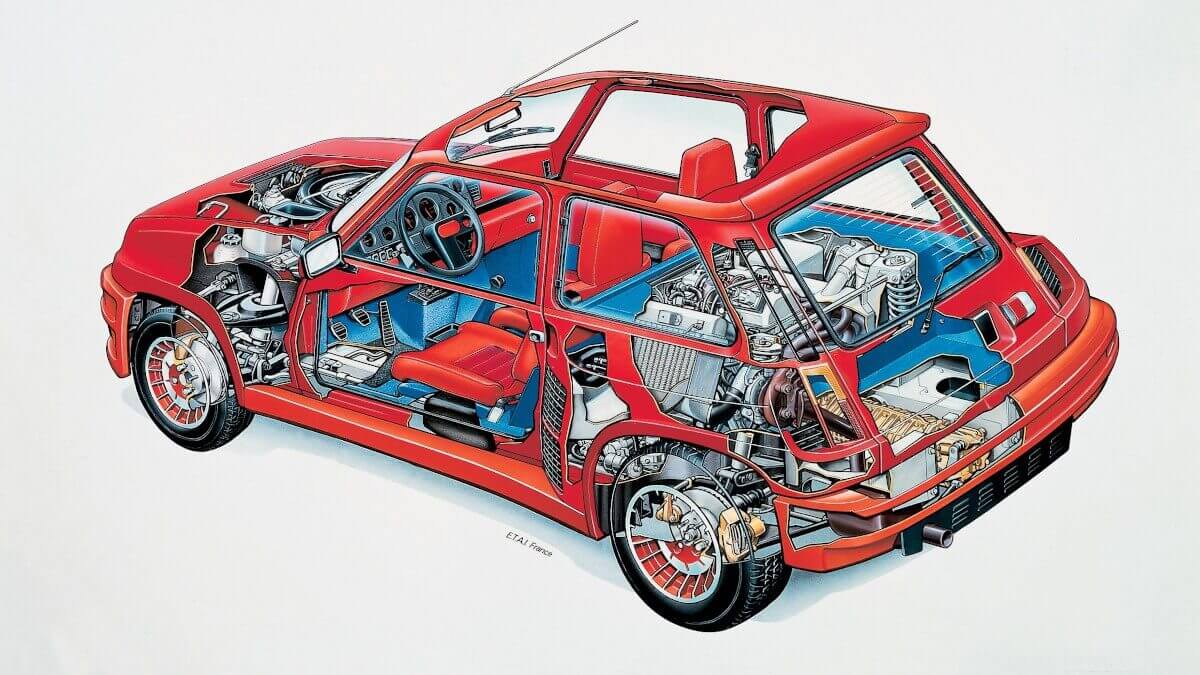

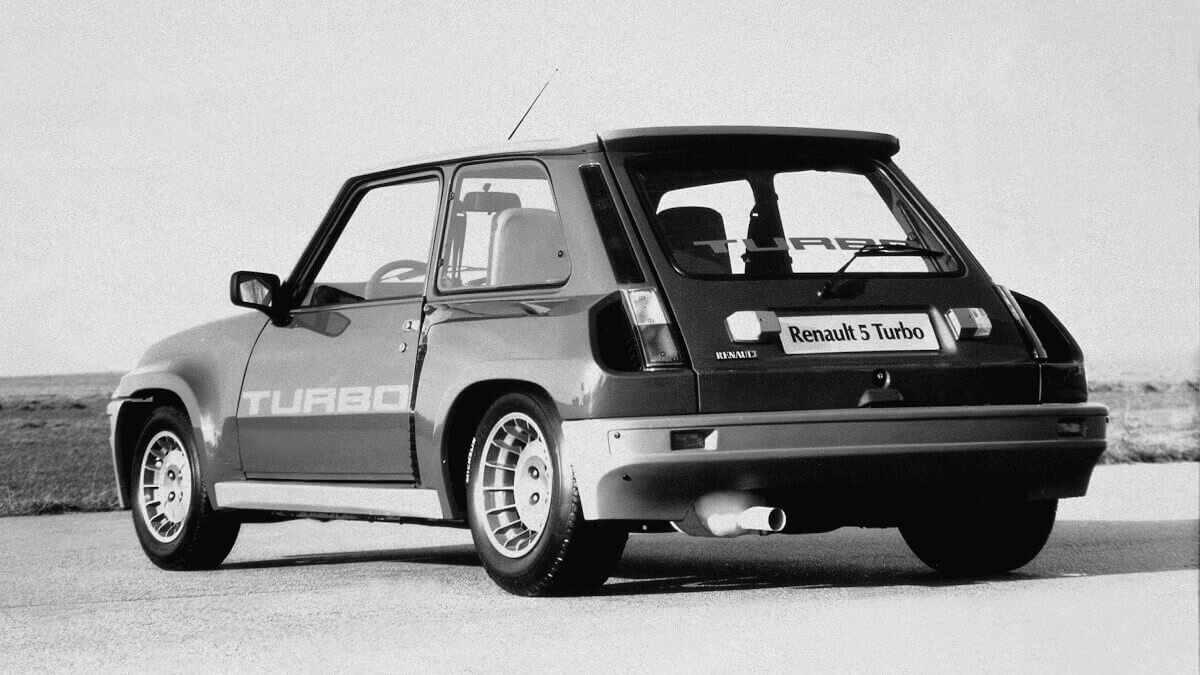

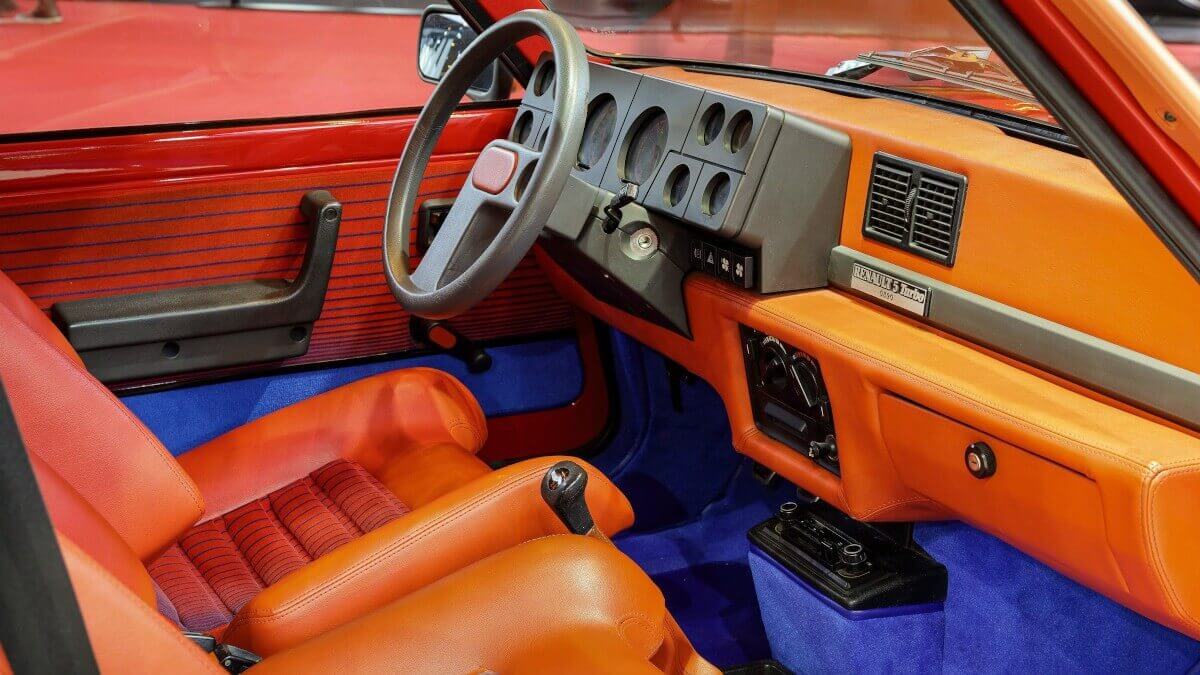





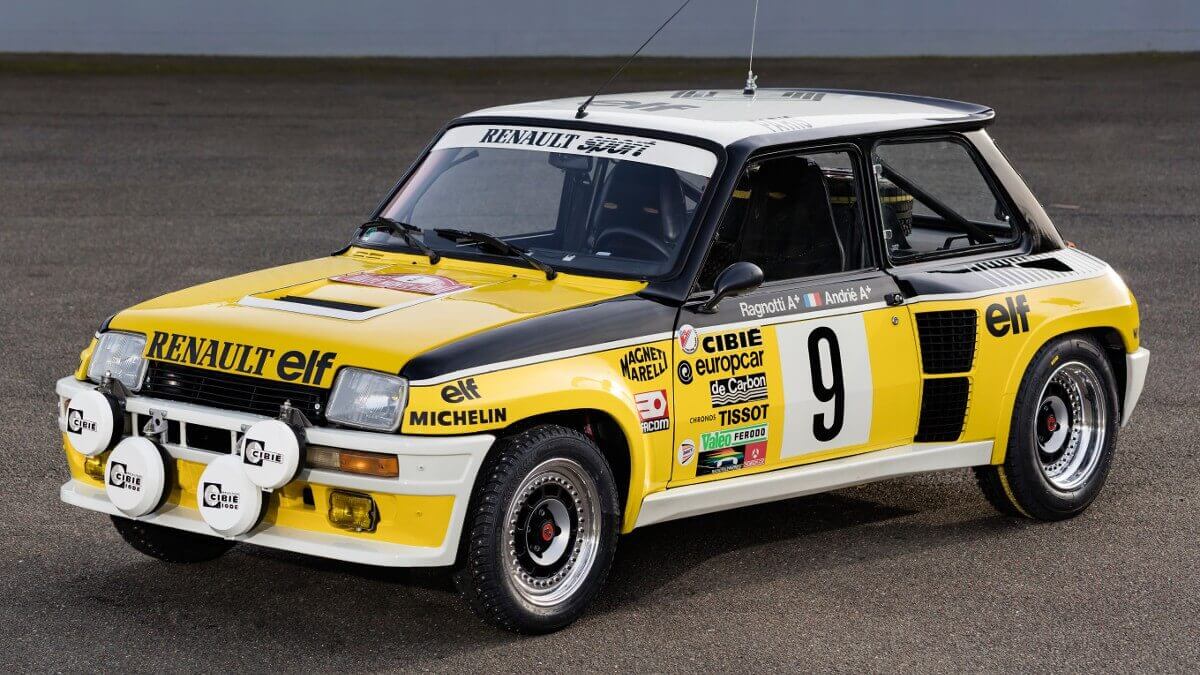

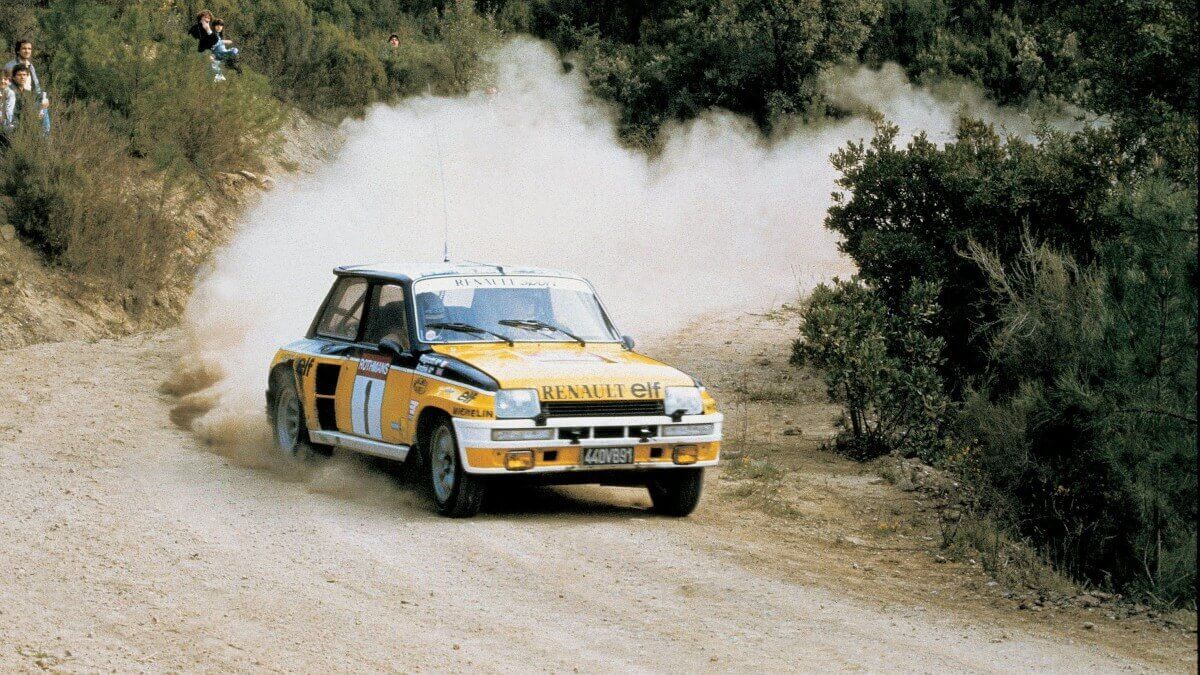







Marcello Gandini was responsible for the design of the Renault 5 Turbo at Bertone. The side walls of the bodyshell were basically taken from the normal three-door Renault 5, but in various places thinner steel sheet was used to reduce weight. In addition, the roof, the doors and the tailgate were made of aluminium as well as the front hood, the wide fenders all around, the sills and the bumpers of polyester plastic. The gutter edgings and the roof edge spoiler were also made of hardened polyurethane foam. Various plastic parts deliberately had a slightly lighter color tone compared to the bodywork. Air inlets and outlets for the oil and water coolers were integrated into the rear fender extensions. In comparison to the normal Renault 5, these add-on parts made for 22 centimeters more width. While a basic R5 model cost less than 10,000 DM in Germany back then, the basic price for a Renault 5 Turbo was 44,600 DM. Between July 1980 and the end of 1982 1,690 copies were built. Originally Renault wanted to produce only 400 pieces to meet the regulations of Group 4 for the World Rally Championship. However, the first series was followed in 1983 by the Renault 5 Turbo 2, as there was still high demand from the customers. With the interior of the normal Renault 5 Alpine, the steel roof and tailgate from the series production as well as black plastic parts and new body colors, the Turbo 2 was on the price lists of Renault until 1986 and came off the production line 3,180 times.
The actual reason for the development of this wild mid-engine compact car can be found in a sentence above: Renault needed a new vehicle for rallying in the 80s. From 1981 the French were able to officially use the widebody R5, starting in the beginning according to the regulations of Group 4 and from 1982 according to those of the new Group B. Due to the cubic capacity of 1.4 liters and the turbo factor of 1.4, the FIA grouped the car in the class up to two liters capacity and not in the larger class with the Audi quattro or Peugeot 205 Turbo 16. Nevertheless, the factory team won the world championship events in Monte Carlo in 1981 as well as in Corsica in 1982 and 1985, in each case with Jean Ragnotti behind the wheel. Various private teams and drivers also used the Renault 5 Turbo in various versions for rallying. The last stage was the Maxi 5 Turbo Evolution, presented at the Geneva Motor Show in 1985, of which 200 examples were built for Group B with wider tires, additional lights at the front and various improvements to details. For private customers, an engine with a capacity of 1,430 cc was installed, and the factory rally cars eventually produced up to 408 hp from 1,590 cc. In addition, between 1981 and 1984 the Elf Renault 5 Turbo Europacup was held in circuit racing, often as part of the supporting programme of European Formula 1 races. Guest drivers such as Walter Röhrl or Jan Lammers caused as much enthusiasm among the spectators as the wild races of the regular field.
Today, well-preserved road vehicles are no longer available for less than 70,000 €. For original rally cars you can dig even deepter into your pockets. Racing cars from the Cup are rarely available on the market. If someone wants to offer you one as ‘accident-free’, a lot of scepticism is advisable. Why? Just search for the Elf Renault 5 Turbo Europacup in YouTube.
Images: Renault



